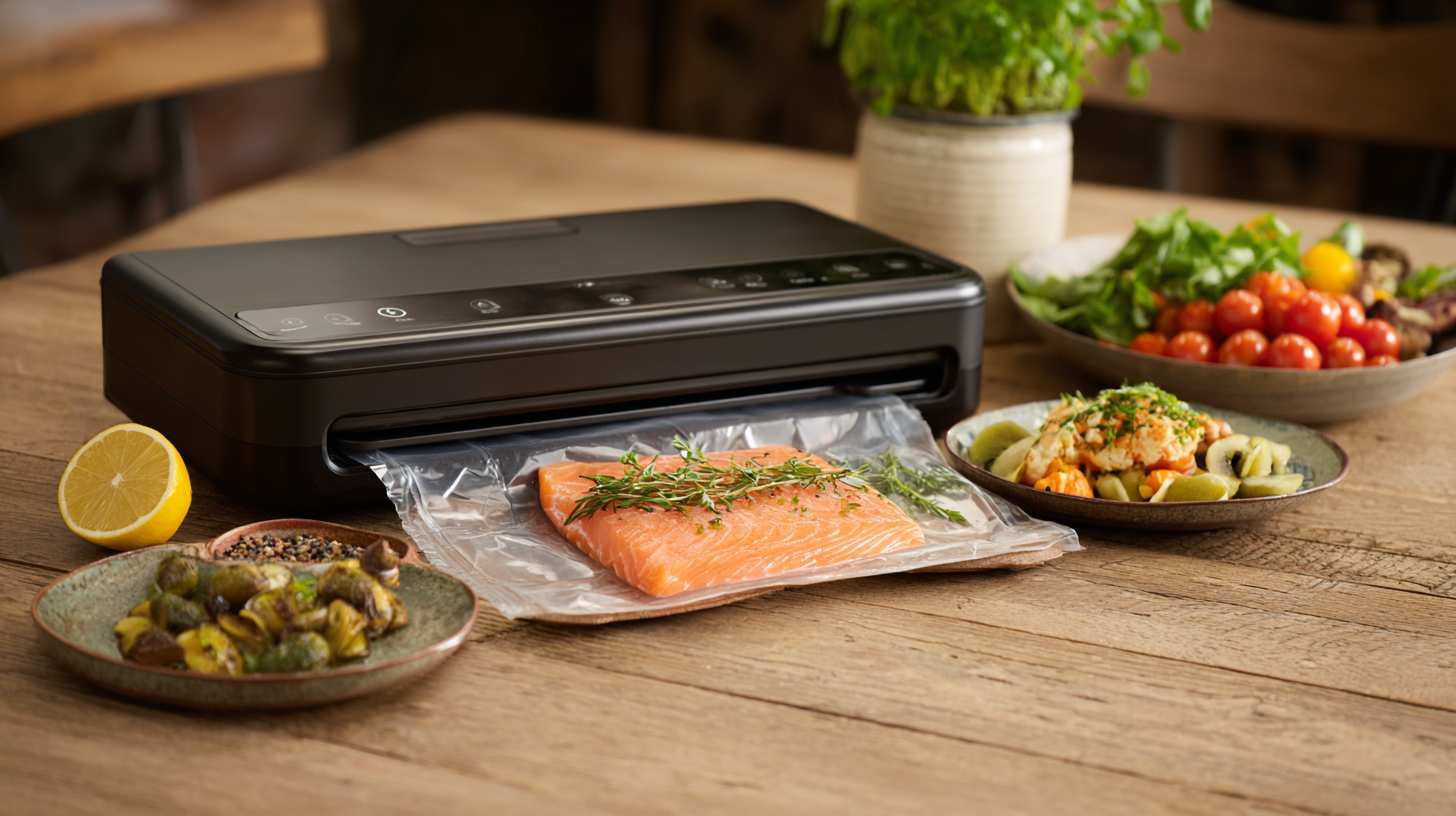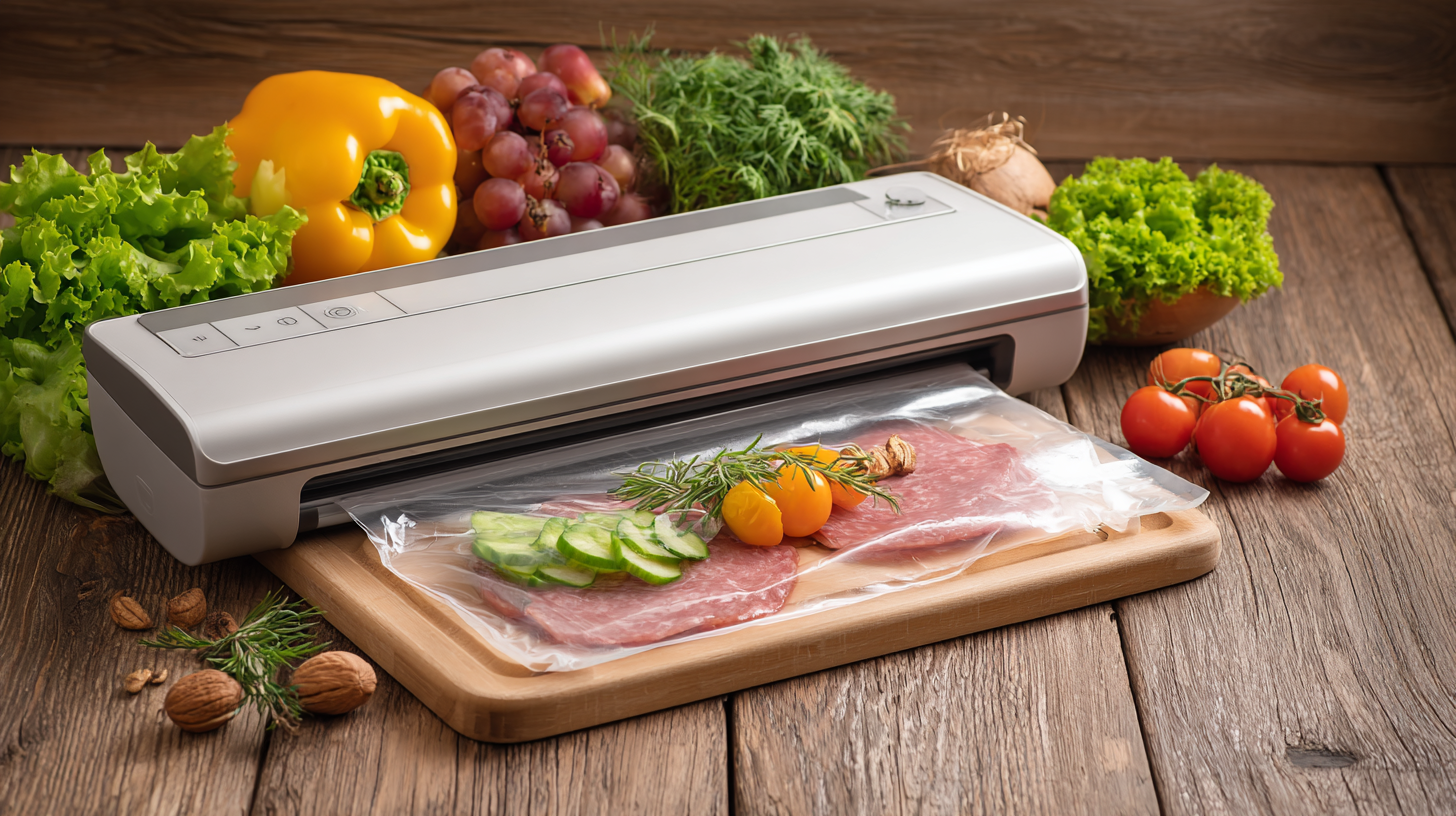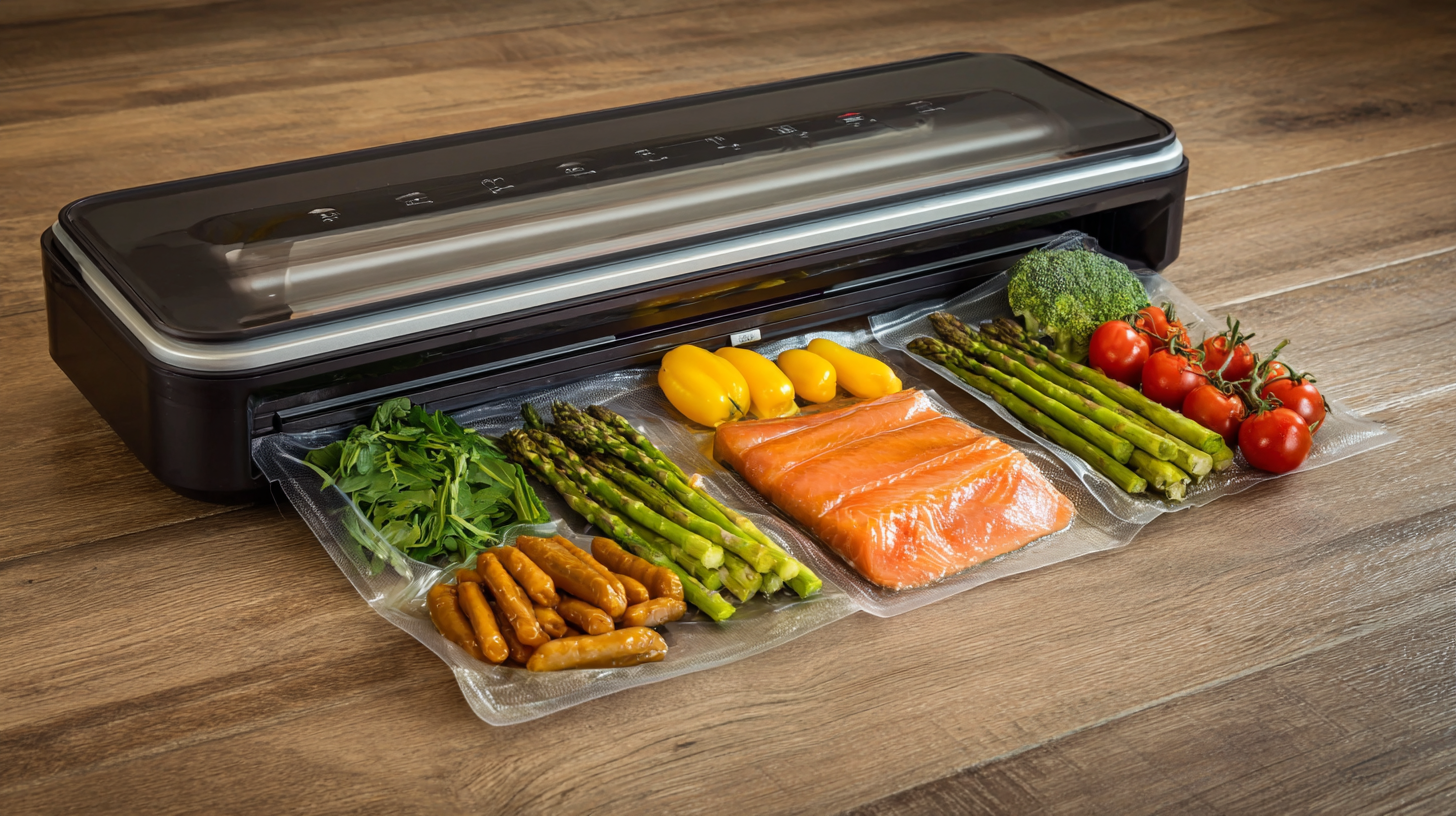About Us | Blog | FAQs | Tips/Troubleshoot | Contact Us | Machine Manuals | Demo Videos
Ultimate Comparison of the Top Vacuum Food Sealer Machines for Home Use
As we embrace the technological advancements of 2025, the vacuum food sealer machine has become an indispensable tool for home cooks and food enthusiasts alike. According to a recent market report by Grand View Research, the global food vacuum sealer market is projected to reach USD 1.08 billion by 2025, growing at a compound annual growth rate (CAGR) of 6.2%. This surge in popularity highlights the growing consumer awareness around food preservation and waste reduction. Vacuum sealing not only extends the shelf life of perishable foods but also maintains flavor and nutritional value, making it an essential investment for households. In this ultimate comparison, we will explore the top vacuum food sealer machines available today, examining their features, pros, and cons to help you make an informed decision in this evolving market.

Table of Contents
[Hide]
Overview of Vacuum Food Sealers: Benefits and Uses for Home Chefs
Vacuum food sealers have become an essential tool for home chefs who want to preserve food freshness, reduce waste, and save money. These machines work by removing air from specially designed bags, effectively sealing in flavors and preventing freezer burn. The benefits are numerous: extended shelf life for perishable items, the ability to buy in bulk without worrying about spoilage, and the convenience of meal prep and storage. For those who love cooking, vacuum sealing opens up opportunities for sous vide cooking, allowing precise temperature control that enhances flavors and texture.

Additionally, vacuum food sealers are incredibly versatile, suitable for various types of food, from meats and vegetables to dry goods and even liquids. Home chefs can marinate proteins in minutes rather than hours, infusing flavors more effectively thanks to the vacuum sealing process. Furthermore, these machines are not just for storage—they can also help maintain the quality of seasonal produce, ensuring that fruits and vegetables harvested in summer can be enjoyed throughout the year. With the right vacuum food sealer, home chefs can elevate their culinary practices and enjoy the many advantages of food preservation.
Key Features to Look for in a High-Quality Vacuum Food Sealer
When selecting a high-quality vacuum food sealer machine for home use, several key features should be considered to ensure you make a wise investment. First and foremost, the sealing mechanism is crucial. Look for machines that offer both automatic and manual sealing options, allowing you to tailor the vacuuming process for different food types. A dual seal function can significantly enhance the longevity of your food storage by providing an extra layer of protection against air and moisture.
Another important feature is the machine's versatility. Some vacuum sealers come with various settings for moist and dry foods, while others may offer different bag sizes and shapes. A built-in cutter is a handy addition that can save time and add convenience when preparing custom-sized bags. Additionally, consider the ease of use and cleaning. A machine with dishwasher-safe parts and intuitive controls can make the food sealing process hassle-free, enabling you to preserve your food with minimal effort.
Comparison of Leading Vacuum Food Sealers: Performance and Pricing
When it comes to preserving food, vacuum food sealers have gained immense popularity among home cooks. They help extend the shelf life of food by removing air from storage bags, thus preventing freezer burn and spoilage. However, choosing the right vacuum food sealer can be a daunting task, especially with the myriad of options available on the market today. This comparison highlights the performance and pricing of some of the leading vacuum food sealers tailored for home use, helping you make an informed choice.
First, we explore the performance factors that matter most: suction power, sealing time, and additional features. High-end models typically offer greater suction power, which ensures a more thorough seal, while budget-friendly options may suffice for occasional use. Features like built-in bag cutters, multiple sealing modes, and roll storage can also enhance usability. Pricing plays a critical role as well, with entry-level models starting at a modest price, while professional-grade machines can be a significant investment. By comparing these aspects, you can find a vacuum food sealer that not only fits your culinary needs but also aligns with your budget.
Ultimate Comparison of Top Vacuum Food Sealer Machines for Home Use
This chart presents a comparison of various performance metrics and pricing for vacuum food sealers used in home kitchens. The performance score reflects each machine's effectiveness, while the price is shown in US dollars. Ease of use and durability ratings give consumers a broader perspective on what to expect from each device.
Top Brands for Vacuum Food Sealers: Analyzing Consumer Feedback
When selecting a vacuum food sealer for home use, consumer feedback plays a crucial role in guiding buyers towards the best options available. Top brands such as Foodsaver, Nesco, and Geryon consistently receive high praise for their reliability and effectiveness. Many users appreciate Foodsaver models for their advanced sealing technology and user-friendly designs, which enable easy operation, even for beginners. Reviews often highlight the durability of these machines, with many customers noting that they have successfully extended the shelf life of their foods significantly.

On the other hand, brands like Nesco are appreciated for their versatility and compact designs, fitting seamlessly into smaller kitchen spaces. Users have commented on the efficiency of these sealers, particularly for sous vide cooking and meal prep. Feedback regarding Geryon vacuum sealers indicates a strong preference for their affordability without compromising functionality. Many consumers recommend them for those looking to invest in a reliable vacuum sealer without breaking the bank. Overall, the analysis of consumer feedback reveals a wealth of insights that can help prospective buyers make informed decisions tailored to their specific needs and culinary habits.
Maintenance Tips for Extending the Life of Your Vacuum Food Sealer
When investing in a vacuum food sealer, maintenance is crucial for longevity and performance. Regular cleaning is the first step to keep your machine in top condition. After every use, wipe down the sealing strip and vacuum chamber with a damp cloth to remove any debris or food particles. Make sure the chamber is dry to prevent mold growth, and avoid using abrasive cleaners that could damage the surfaces.
Another important tip is to check and replace the gasket if necessary. The gasket creates an airtight seal, and over time it can wear out. Inspect it regularly for cracks or tears, and if any damage is found, replace it promptly to ensure effective sealing. Additionally, take the time to test the suction power occasionally. If you notice a decline in performance, it may indicate a need for maintenance or calibration.
Lastly, store your vacuum food sealer in a cool, dry place when not in use. Avoid exposing it to heat sources or direct sunlight, which could affect its components. By following these simple maintenance tips, you can significantly extend the life of your vacuum food sealer and ensure it continues to meet your food preservation needs.
Ultimate Comparison of the Top Vacuum Food Sealer Machines for Home Use - Maintenance Tips for Extending the Life of Your Vacuum Food Sealer
| Feature | Model A | Model B | Model C |
|---|---|---|---|
| Sealing Type | Automatic | Manual | Automatic |
| Vacuum Power | High | Medium | High |
| Bag Compatibility | Universal | Brand-specific | Universal |
| Included Accessories | 5 Bags, Tool | 2 Bags | 10 Bags, Roll |
| Price Range | $80 - $120 | $50 - $70 | $100 - $150 |
| Warranty | 2 Years | 1 Year | 3 Years |
| Maintenance Tips | Clean regularly, replace bags | Keep dry, avoid overfilling | Use genuine parts, store properly |

